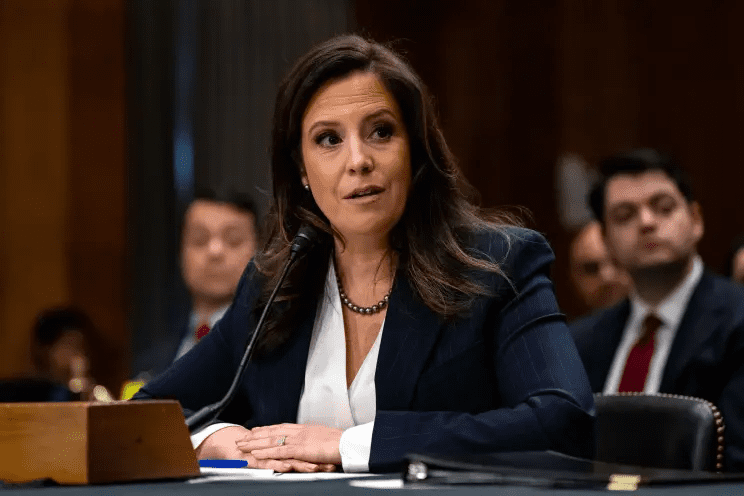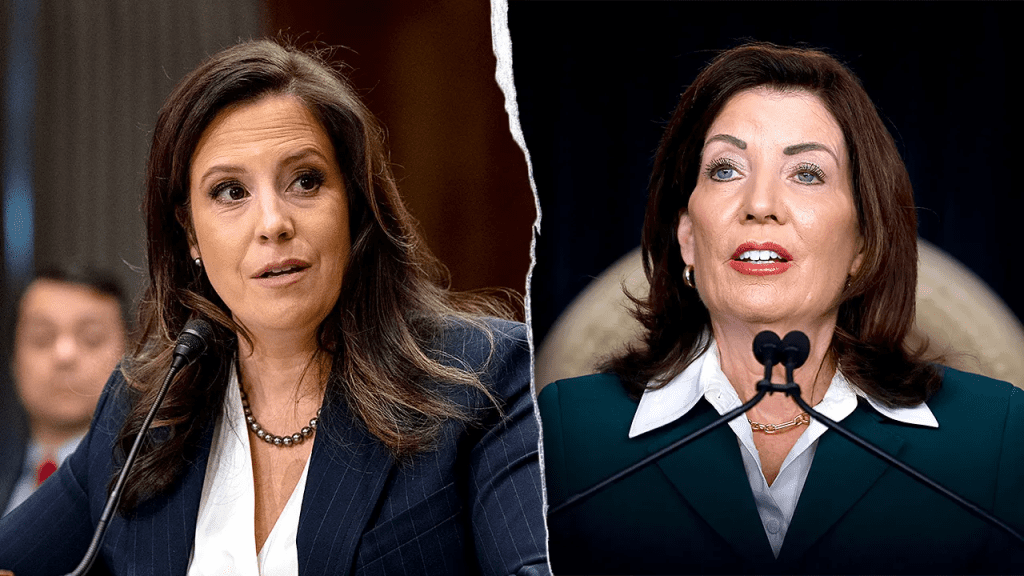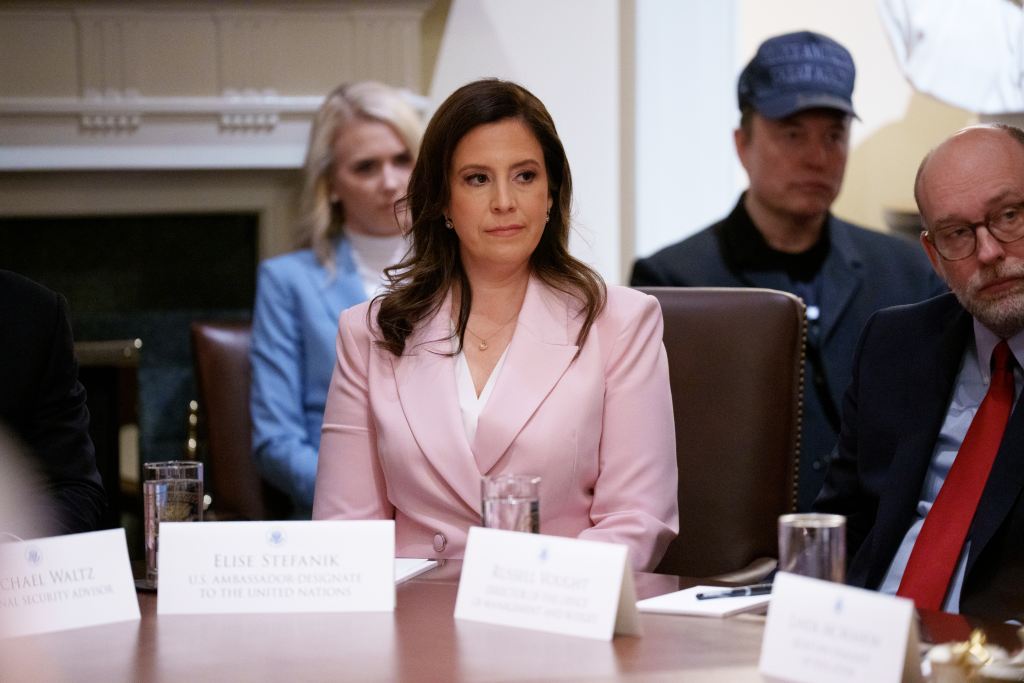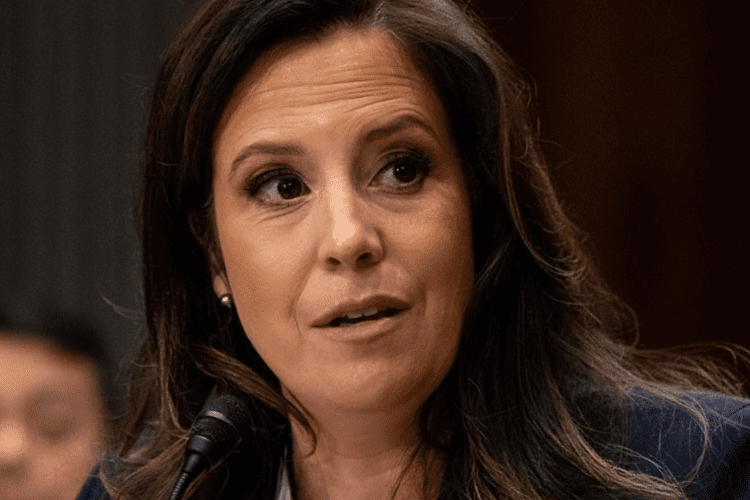Shock Announcement: Elise Stefanik Declares Run for New York Governor and Labels Hochul’s Leadership “An Existential Battle” to Save Western Civilization
On a crisp morning in early November, Elise Stefanik—a rising star once best known for her rapid ascent within the U.S. House of Representatives—made the dramatic leap. With a campaign video that cast the streets of New York as “ash” and the state’s future teetering on the edge, she formally announced her intention to become the next governor of New York in the 2026 election. It marks a pivotal moment in what many are calling the most consequential statewide contest in years—an ambitious bid that could reshape the political contours of the Empire State and reverberate across the country.

For years, Rep. Stefanik—a former House Republican Conference Chair who vaulted into national attention by aligning herself closely with Donald Trump and the MAGA movement—had teased a run for higher office. Now, she has pulled the trigger, choosing to challenge incumbent Kathy Hochul, a Democrat who has held the governor’s office since 2021 and is seeking re-election for a full term. “The Empire State has fallen,” the video narrator intoned, as the congresswoman painted a picture of unaffordable housing, soaring utility and energy costs, and a government that has “bent the knee to defund the police, tax-hike, and socialist chaos.”
Viewed from the vantage point of her political journey, the 41-year-old Stefanik’s candidacy feels both inevitable and risky. She entered Congress in 2015 at a young age, representing New York’s 21st district, and rose quickly in the GOP ranks. Her nomination to become U.S. Ambassador to the United Nations in early 2025 was later withdrawn, in part because her departure would have weakened the party’s slim House majority.

Now, she arrives at the governor’s race not only with name recognition and national backing, but also with an unmistakable message: that New York’s path under Hochul is failing and must be corrected. Stefanik holds her opposition tight, describing Hochul as “the worst governor in America” and positioning her campaign as a unified movement of Democrats, Republicans and Independents “to save our state.”
The stakes are vast. New York has not elected a Republican governor since George Pataki left office in 2002. Yet momentum for Stefanik appears to be building: one recent poll from the Manhattan Institute put her slightly ahead of Hochul—43 % to 42 %. While still within the margin of error, it marked a statistical rarity in the state’s political history.
What makes Stefanik’s candidacy compelling is how it blends national themes with local anxiety. She taps into the frustration among New Yorkers who say they are tired of high taxes, unaffordable housing and public-safety concerns. By tying Hochul’s fortunes to those of the newly elected New York City mayor Zohran Mamdani—a progressive who ran on tax-the-rich and socialist-leaning policies—Stefanik frames the race not simply as a local election, but a referendum on governance, values and direction.

Yet the challenges she faces are real. The Democratic Party holds a registration advantage in New York, and Hochul retains deep roots in state government. Critics of Stefanik point out her alignment with Trump-era politics may energize the base but also galvanize opposition. Some voters may wonder whether her leap from Congress to the governor’s office reflects readiness, or ambition. On the Republican side, though potential challengers like Rep. Mike Lawler bowed out in 2025, clearing a near-smooth path, Stefanik will still need to prove she has the breadth to unite the varied Republican coalitions across New York.
From the vantage of storytelling, there’s a compelling arc: a congresswoman who once held one of the highest-ranking positions for House Republicans, who declined a plum U.N. appointment to stay in Congress, now pivots toward the governor’s mansion in Albany. It suggests ambition, yes—but also a belief that the moment for change has arrived. For many of her supporters, she embodies the new-school conservative leader: young, assertive, unafraid to wage culture-war battles while also promising economic relief. The question now is whether those qualities can translate to a statewide winning coalition in a state as diverse and complex as New York.
There is also the emotional dimension. Stefanik’s narrative is built on urgency. Her campaign video emphasizes “the ashes of the Empire State,” the idea that New York is teetering and in need of rescue. For voters who believe their lives are being squeezed by fiscal pressures, or who look at cities grappling with crime and see the state’s leadership as neutral at best, this message resonates. On the other side, voters who view the state’s turbulence differently may see in Stefanik a figure of disruption—and for them, perhaps worry. The tension between restoration and rebellion underpins the unfolding drama.

In practical terms, what will decide the race is how Stefanik presents her governance plan. It’s one thing to rail against Hochul’s record, quite another to articulate how she would reduce housing costs, reform public safety, manage state-level budgets and deliver results to millions of New Yorkers. The campaign trail ahead will test her ability to pivot from Washington to Albany, to move from national spotlight to the daily grind of state executive leadership. Hochul, for her part, has already signalled readiness for the fight, preparing her campaign and sharpening her messaging accordingly.
As the 2026 election edges closer, the broader national implications cannot be ignored. Should Stefanik succeed, it would send a message: the Republican Party can win in America’s ailing blue bastions, even with a candidate whose profile is steeped in the Trump-aligned conservative movement. It would shift the narrative of what is possible in states long considered safe for Democrats. Conversely, if she fails, it may suggest the limits of nationalized campaigning in highly localized contexts or affirm the strength of entrenched Democratic institutions in New York.

For New Yorkers watching this unfold, the question is personal: Are they better off today than they were four years ago? Can a change of leadership rescue the state’s promise of opportunity, affordability and safety? Stefanik’s challenge is to convince enough voters that yes, she is the one who can deliver it. And at the same time, she must navigate the internal Republican dynamics—ensuring she doesn’t alienate moderate voters, while mobilizing the conservative base. The dual demands of expansion and consolidation will define the campaign.
In the end, the 2026 New York governor’s race may well become one of the most closely watched in modern times. The drama combines ambition, ideology, regional politics and national undercurrents in a way rarely seen in a single campaign. Elise Stefanik’s entry has lit the fuse. Whether she explodes onto the political scene with a win—or fizzles under the weight of expectations—is a story only time will tell. But one thing is certain: the battle for the Empire State is on, and for better or worse, the country will be watching.


